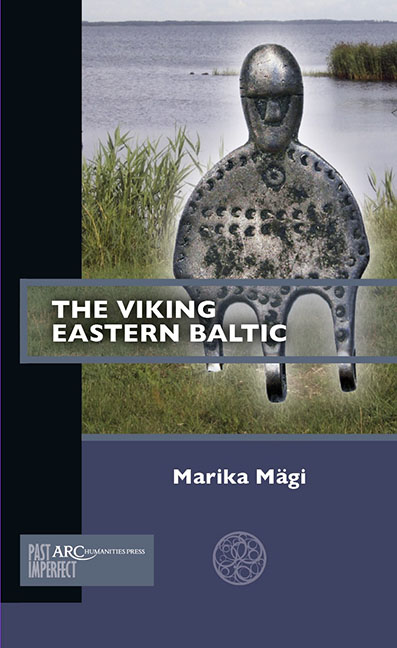Book contents
- Frontmatter
- Contents
- List of Illustrations
- Introduction
- Chapter 1 Different Cultures, Different Modes of Communication
- Chapter 2 Eastbound Routes Gain Momentum
- Chapter 3 Baltic Sea Warriors
- Chapter 4 The High-Point of Scandinavian Eastward Activity
- Chapter 5 End of the Viking Age
- Conclusion
- Further Reading
- Frontmatter
- Contents
- List of Illustrations
- Introduction
- Chapter 1 Different Cultures, Different Modes of Communication
- Chapter 2 Eastbound Routes Gain Momentum
- Chapter 3 Baltic Sea Warriors
- Chapter 4 The High-Point of Scandinavian Eastward Activity
- Chapter 5 End of the Viking Age
- Conclusion
- Further Reading
Summary
The very latest research shows that the Viking influence on the eastern coasts of the Baltic Sea and today's Russia was at least as significant as their westward—and much better known—influence in the North Atlantic. At any rate, based on current information, raids in the Baltic Sea were earlier than the Vikings’ first forays into Western Europe. This book discusses the impact of the Viking Age Scandinavians on the Eastern Baltic region—an impact entailing variously pillaging, raids, military and commercial cooperation.
The modern-day Baltic States (Estonia, Latvia, and Lithuania) are habitually perceived as a single, culturally uniform region, a perception that is routinely projected back into the past. Nothing can be further from the truth. The region in fact falls into two distinct halves, both linguistically and in terms of religion; in terms of history their paths have diverged dramatically and did not converge again until the twentieth century. A one-time superpower, Lithuania takes pride in its former status as a Grand Duchy, whereas the rest of the Eastern Baltic, far from being a homogeneous entity, has time and again found itself governed by an assortment of political structures.
Barely a century ago, Finland was also viewed as being part of the region, as one of four Baltic countries. Even today, Estonia has a closer cultural affinity with Finland than with its other neighbours; Latvia and Lithuania, on the other hand, enjoy a strong bond based on linguistic kinship and a shared cultural identity.
During the Viking Age the situation was presumably similar to the way it is today, and it is safe to say there was never any common “Baltic” archaeological culture covering the present-day Baltic countries (Map 1).
Instead, two diverse regions can be identified in the Eastern Baltic. The Baltic Finnic Iron Age culture thrived in the northern half of the Eastern Baltic and the northwestern part of today's Russia; the Balts’ culture spread in the southern half, also embracing the northeastern areas of today's Poland and part of Belarus.
Likewise, the term “Baltic” is used differently in different countries and languages. Archaeologists within the Baltic States themselves apply the term exclusively to ethnic Balts, whereas the rest of the world, Finland included, extends it to all three modern Baltic States.
- Type
- Chapter
- Information
- The Viking Eastern Baltic , pp. 1 - 6Publisher: Amsterdam University PressPrint publication year: 2019



